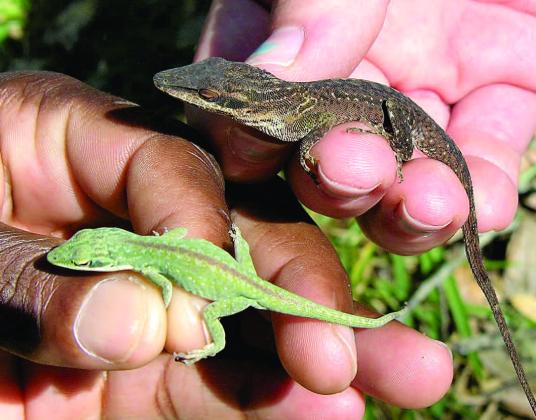The weather is heating up and the lizards are becoming more active. Central Florida is home to over 50 lizard species. However, most of those species are invasive.
You’ve surely seen the small brown lizards around your home. They are a type of lizard called brown anoles and are not from here. In fact, they compete with our native green anole, making it harder for the natives to survive.
Brown Anole — Despite being very common here, brown anoles are actually from Cuba, the Bahamas, and other islands of the West Indies. They are usually brown, but can range from brown to gray to black, and some are even reddish. Since their introduction to Key West in the late 1800s, brown anoles have expanded throughout Florida. They are now found in every county of Florida’s peninsula and along much of the coast of the panhandle.
Green Anole— The only native anole species in the United States is the green anole, which is sometimes mistakenly referred to as a “chameleon” because it can change color. True chameleons, which are not native to Florida, are members of an entirely different group of lizards than the anoles. As their name implies, native green anoles are often green, but they can quickly change to brown or gray. The brown anole competes with the green anole for food and shelter – making it hard for the green anole to survive. In addition, brown anoles are known to prey on young green anoles and have more rapid reproduction.
Thankfully, the green anoles have been able to somewhat adapt. When brown anoles are present, native green anoles move vertically up in the habitat. But without trees and tall shrubs, there is nowhere for the green anoles to move, and they ultimately disappear from the area.
Brown anoles are here to stay – they are impossible to eradicate at this point. Don’t worry about eliminating the brown anoles, instead you can help the native green anoles by adding tall shrubs and trees to your landscape. The good news is both species are beneficial garden predators, catching and eating beetles, flies, spiders, roaches, and other small pests.



